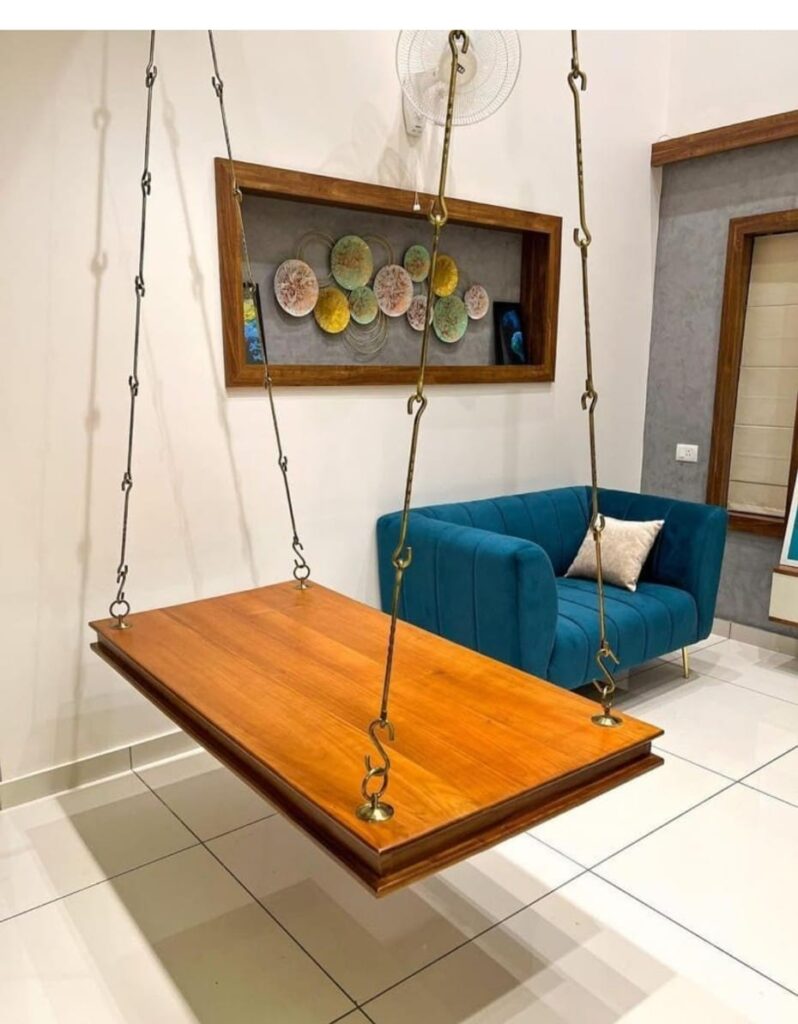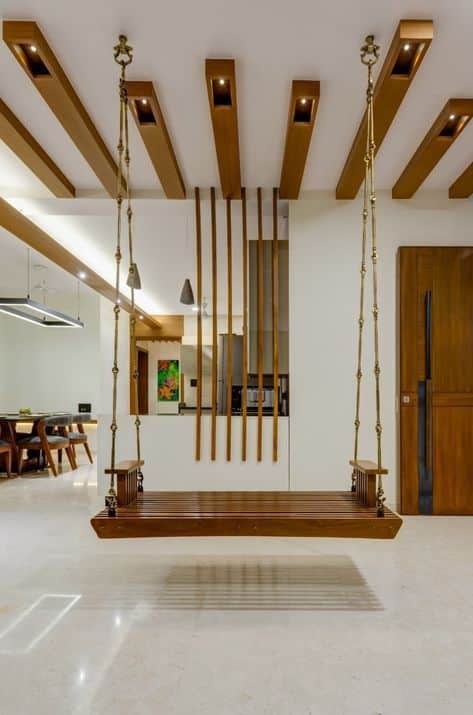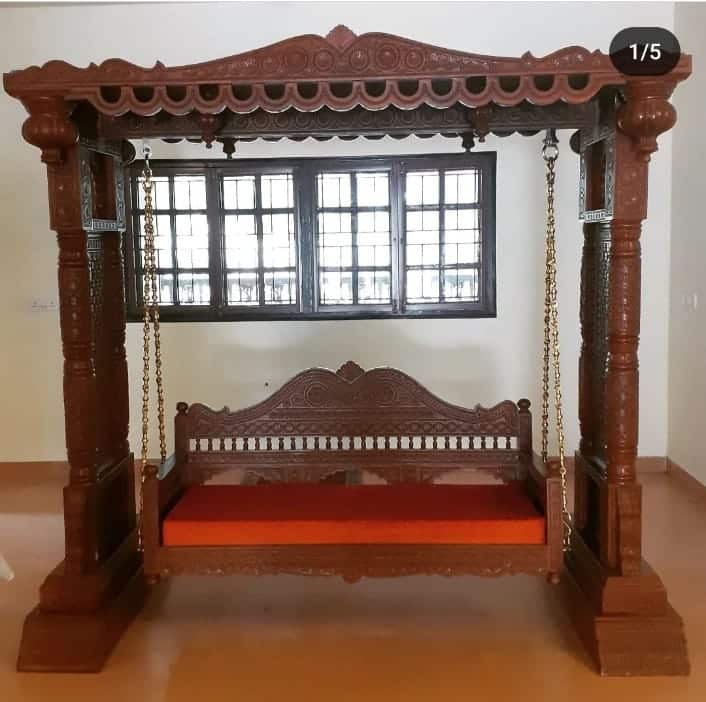A Guide to Choosing the Right Ceiling Swing for Your Home Leave a comment
Choosing the right ceiling swing for your home involves considering various factors. Here’s a comprehensive guide to assist you.

Space Assessment: Evaluate the available space. Ensure there’s enough room for the swing to move freely without hitting walls or furniture.
Ceiling Strength and Structure: Confirm that the ceiling can support the jhola’s weight. Locate ceiling beams or use a stud finder to ensure a secure installation.
Swing Type: Decide on the type of ceiling swing – classic wooden ceiling swings, hammock chairs, or hanging daybeds, wooden jhola with backrest, acrylic ceiling swings are trending now, ceiling swings with cane designs look luxurious; teak wood ceiling swings have a classic look; mahogany ceiling swings have a contrast look; and solid wood swings. Choose one that aligns with your aesthetic and comfort preferences.

Material and Durability: Opt for high-quality materials that suit your home’s style and climate. Consider weather-resistant options for outdoor swings.
Weight Capacity: Check the swing’s weight capacity to ensure it can safely support the intended users.
Installation and Hardware: Assess if the swing comes with installation hardware. If not, ensure you have appropriate hardware and that it’s properly installed for safety.

Comfort and Design: Prioritize comfort. Look for ergonomic designs and suitable cushioning. Consider colors and patterns that complement your interior or outdoor decor.
Maintenance: Consider the maintenance requirements. Some wooden jhola may need occasional cleaning or treatment for durability.
Indoor vs. Outdoor Use: Choose a swing designed specifically for indoor or outdoor use, considering weather resistance and appropriate materials.
Safety Precautions: Keep safety in mind. Inspect the swing regularly for wear and tear, and follow weight guidelines for safe use.
Budget: Set a budget range before shopping and look for swings that match your quality and feature requirements within that range.
User Preferences: Consider who will use the swing—adults, kids, or both. Ensure the swing suits the needs and preferences of the intended users.
By carefully considering these factors, you can select a ceiling swing that not only enhances your home decor but also provides a comfortable and safe experience for all users. Always follow manufacturer guidelines for installation and use to ensure safety and longevity.
Frequently Asked Questions for Choosing the Right Ceiling Swing for Your Home:
1. What type of ceiling is suitable for installing a swing?
Ideally, choose a ceiling with strong beams or joists to support the weight. Wooden beams or a structural ceiling, like a concrete ceiling, are typically suitable.
2. How do I determine the right size of a ceiling swing for my space?
Measure the available space where you intend to place the swing, ensuring it has enough room to swing without obstruction.
3. Can any swing be used both indoors and outdoors?
Some swings are designed for indoor use, while others are specifically made for outdoor environments. Choose a swing that suits your intended space and has appropriate weather-resistant materials if needed for outdoor use.
4. Are ceiling swings difficult to install?
The complexity of installation depends on the swing type. Some swings may require professional installation, while others come with straightforward instructions for DIY installation.
5. How do I maintain a ceiling swing for longevity?
Maintenance involves regular checks for wear, tear, and cleanliness. Depending on the material, periodic cleaning and applying protective treatments might be necessary.
6. Can I customize the color or design of the swing to match my interior?
Some swings offer customization options, such as color choices or cushion patterns. Ensure to check if customization is available before purchase.
7. Can children use the same swing designed for adults?
It’s essential to ensure the swing is appropriate for the size and weight of the intended users. Some swings may have specific weight and size restrictions for safe use by children.







